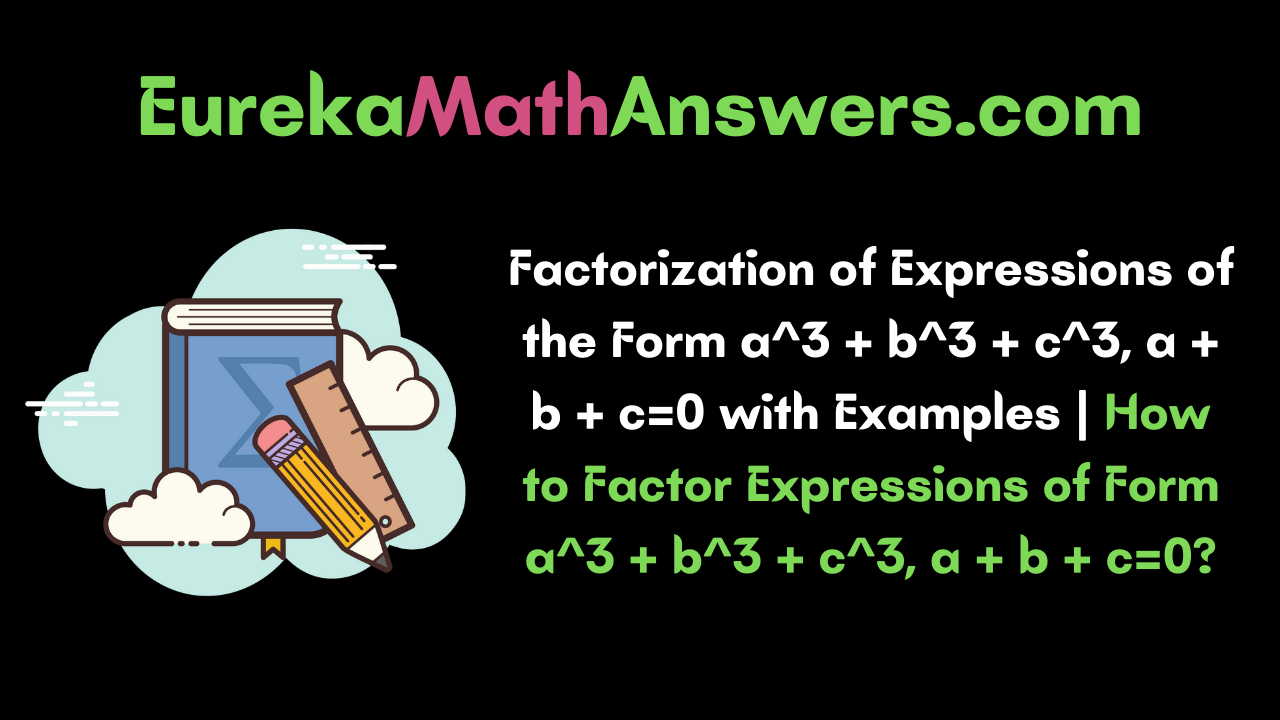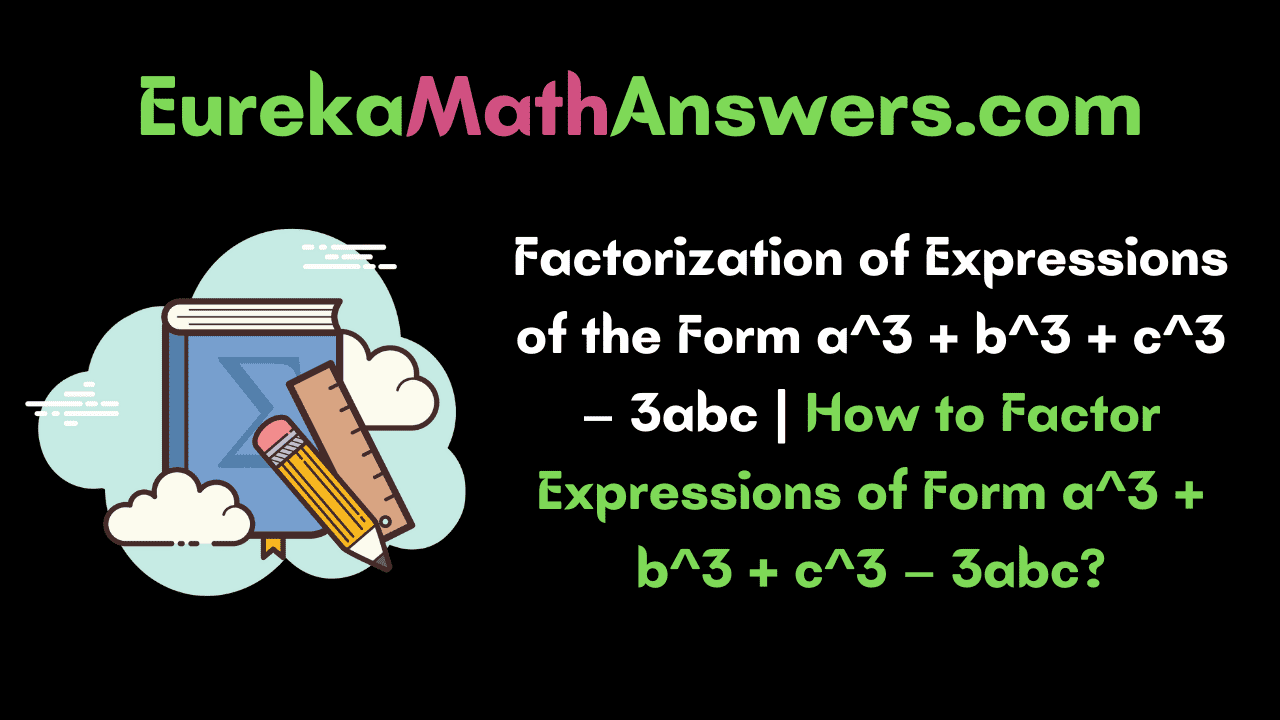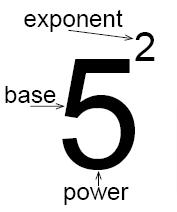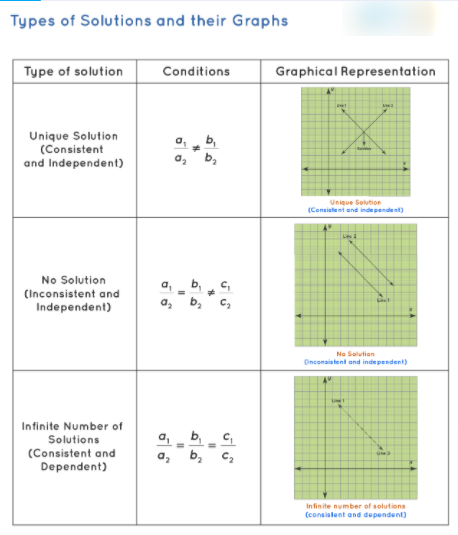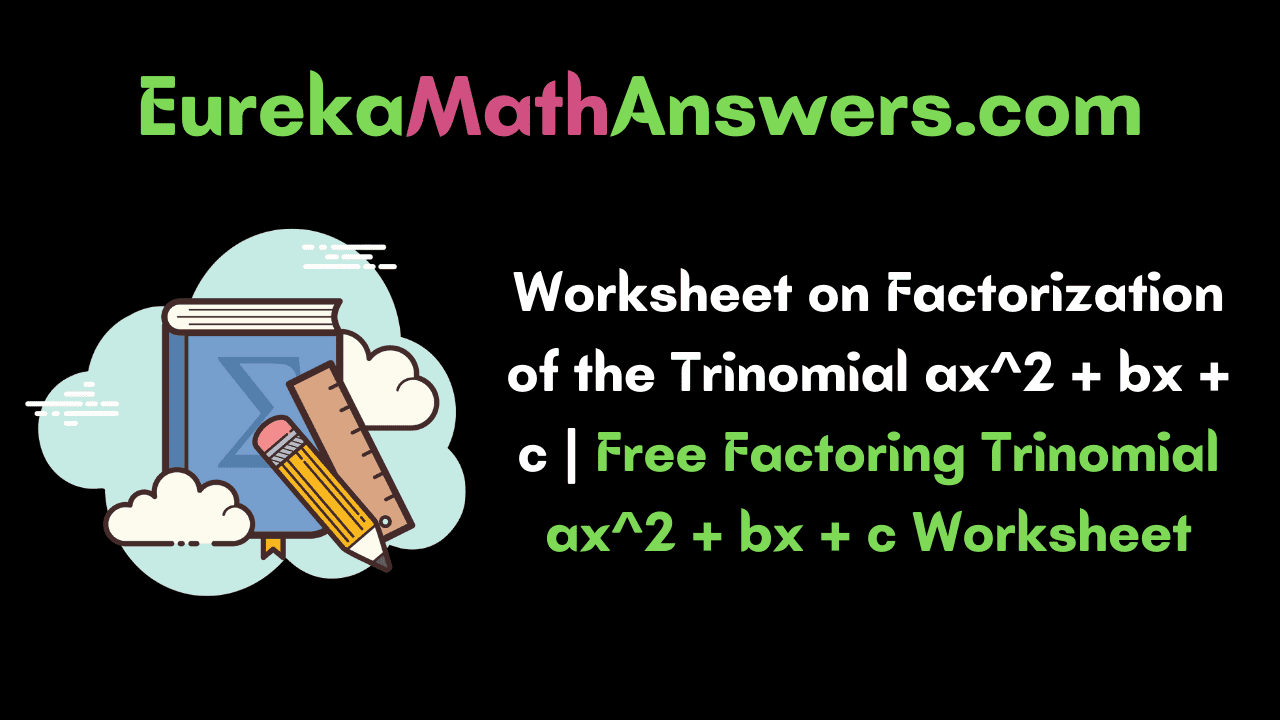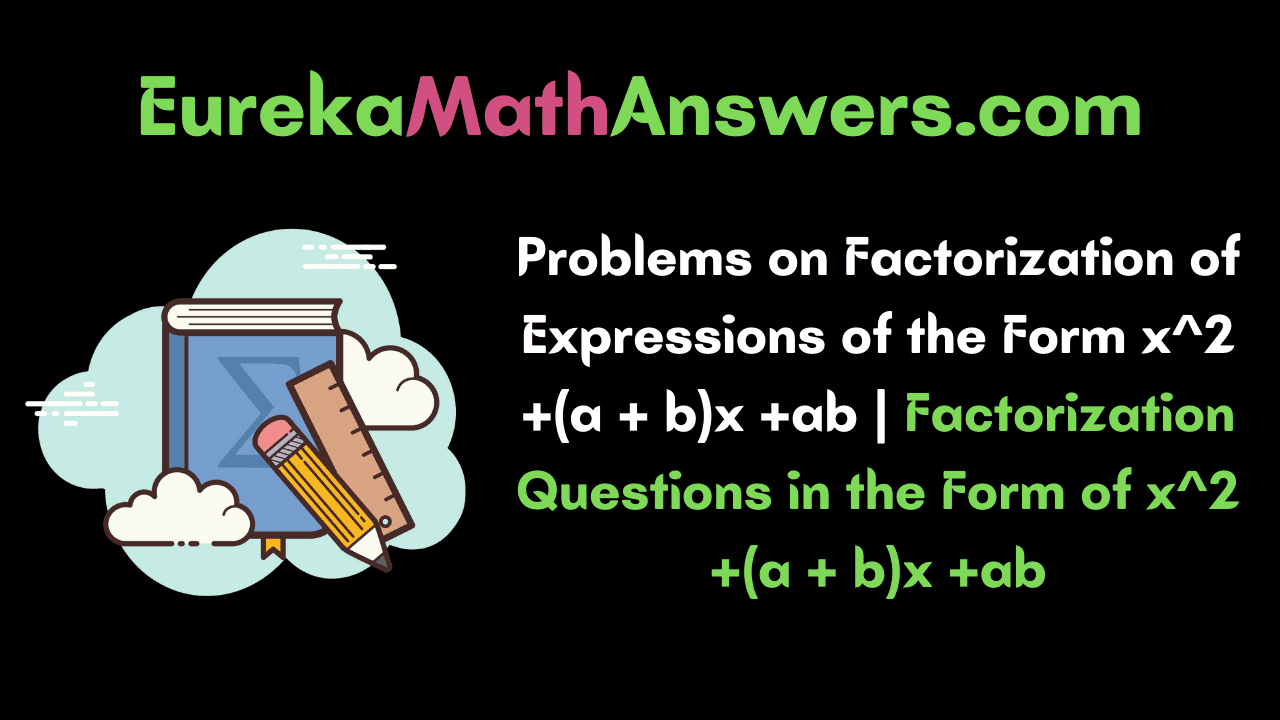Get to learn how to factorize the expressions of the form a3 + b3 + c3, a + b + c=0, or can be put in the form a3 + b3 + c3, a + b + c=0 by going through this page. Check out the step-by-step process listed for solving the factorization of expressions of the form a3 + b3 + c3, a + b + c=0, and apply the related knowledge while solving similar problems. Make the most out of the problems available and get a good hold of the concept of factorization of expressions.
Also, See:
- Factorization of Expressions of the Form a^3 + b^3 + c^3 – 3abc
- Factorization of Expressions of the Form a^3 – b^3
- Factorization of Expressions of the Form a^3 + b^3
Proof of a3 + b3 + c3 = 3abc when a + b + c = 0
Given Statement is a3 + b3 + c3 ; a+b+c=0
We can rewrite the expression a3 + b3 + c3 = a3 + b3 – (-c)3
= a3 + b3 – (a + b)3, [Since, a + b + c = 0]
= a3 + b3 – {a3 + b3 + 3ab(a + b)}
= -3ab(a + b)
= -3ab(-c)
= 3abc
Solved Examples on Factorization of Expressions of the form a^3 + b^3 + c^3, a + b + c=0
Example 1.
Factorize (x + y)3 + (z – y)3 – (x + z)3?
Solution:
Given (x + y)3 + (z – y)3 – (x + z)3
= (x + y)3 + (z – y)3 +(-(x + z)3) where (x+y)+(z-y)+(-(x+z)) =0
Therefore, given expression = 3(x+y)(z-y)(-(x+z))
=3(x+y)(y-z)(x+z)
Example 2.
Factorize u3 + v3 + w3?
Solution:
Given Expression = u3 + v3 + w3
=u3 + v3-(-w)3
=u3 + v3-(u+v)3
= u3 + v3– (u + v)3, [Since, u +v + w = 0]
=u3 + v3-{u3 + v3 + 3uv(u + v)}
= u3 + v3 – {u3 + v3 + 3uv(u + v)}
= -3uv(u + v)
= -3uv(-w)
= 3uvw
Example 3.
Factorize (u + v)3 + (w – v)3 – (u + w)3?
Solution:
Given Expression = (u + v)3 + (w – v)3 – (u + w)3
=(u + v)3 + (w – v)3 – (u + w)3
=(u + v)3 + (w – v)3 +(-(u + w)3) where (u+v)+(w-v)+(-(u+w)) =0
Therefore, given expression = 3(u+v)(w-v)(-(u+w))
=3(u+v)(v-w)(u+w)
Example 4.
Factorize the Expression (x + y)3 + (z + y)3 + (x + z)3
Solution:
Given Expression = (x + y)3 + (z + y)3 + (x + z)3
= (x + y)3 + (z + y)3 + (x + z)3 where (x + y)+ (z + y) + (x + z)= 0
=3(x+y)(z+y)(x+z)
